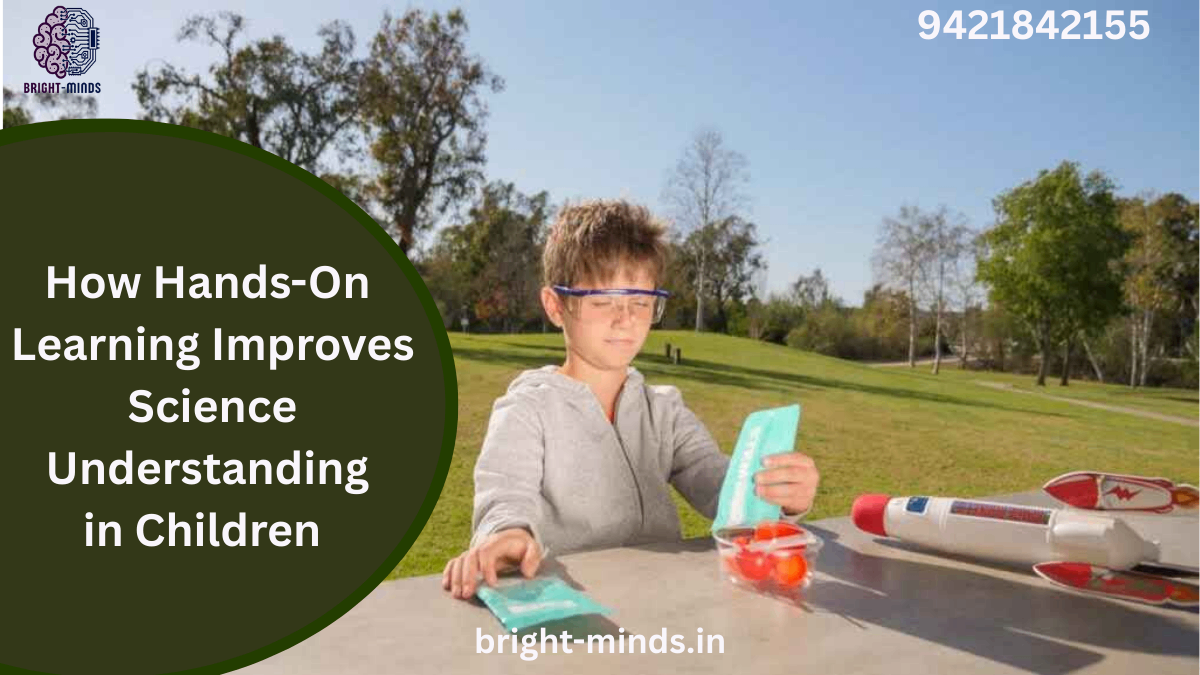How Hands-On Learning Improves Science Understanding in Children
Let’s face it—when we hear “science,” most of us think of textbooks, memorizing definitions, or maybe even boring lectures from our school days. But science isn’t just facts—it’s curiosity in action. And for children, the best way to spark that curiosity isn’t by reading about it. It’s by doing.
That’s where hands-on learning shines.
Whether you’re a parent, educator, or someone working in the education industry, understanding how hands-on science activities improve comprehension is a game-changer. Not only does it make learning fun, but it also builds deeper understanding, critical thinking, and long-term success.
🌟 Why Hands-On Learning Works for Science
Hands-on learning is exactly what it sounds like—children actively engaging with materials, experiments, and real-life tools to explore scientific concepts. Instead of passively absorbing information, kids are touching, testing, building, observing, and discovering.
🧠 Here’s Why It Works:
- Engages Multiple Senses: Children see, touch, smell, and sometimes even hear or taste their science lessons.
- Encourages Curiosity: Active learning fuels questions like “What happens if…?” and “Why did that change?”
- Builds Conceptual Understanding: Kids move beyond memorization to actually grasp how and why things work.
- Boosts Retention: Studies show children remember more when they’re physically involved in the learning process.
- Strengthens Problem-Solving: Trial and error helps kids think critically and creatively.
🧪 Real-World Example: Baking Soda Volcano
Think of the classic baking soda and vinegar volcano. It’s simple, fun, and packed with science: chemical reactions, gas formation, and pressure release.
Now compare that to reading about chemical reactions in a textbook. Which do you think leaves a stronger impression?
Children who participate in these experiments are applying science in real time, which creates a lasting impact.
🔍 Industry Insight: Why Hands-On Learning is Trending
In recent years, hands-on and project-based learning have become major trends in science education—and for good reason.
📈 Market Trends:
- STEM learning kits for at-home use are booming, with the global market expected to exceed $3.5 billion by 2026.
- Schools are adopting inquiry-based learning strategies, encouraging students to explore before being taught.
- EdTech platforms are designing immersive digital simulations for students to conduct experiments virtually.
🧩 Key Insight for Companies:
Organizations that prioritize interactive, experiential science content are better positioned to meet market demand, especially in early education and K-8 learning spaces.
💬 Practical Tips: How to Implement Hands-On Science Learning
You don’t need a full lab or expensive gear to get started. Whether at home or in the classroom, small activities can make a big difference.
1. Start with Simple Experiments
Use everyday items to explore scientific ideas. Water, food coloring, baking soda, magnets—your kitchen is a lab!
Try This: Mix cornstarch and water to make “oobleck” and explore solids vs. liquids.
2. Ask Open-Ended Questions
After an activity, ask:
- “What do you notice?”
- “Why do you think that happened?”
- “What would happen if we changed something?”
These promote critical thinking and deeper understanding.
3. Incorporate Science into Daily Life
Nature walks, cooking, gardening, and even cleaning can teach kids about ecosystems, heat, states of matter, and more.
4. Use Storytelling with Experiments
Give context to experiments by framing them in a story. Turn your child into a detective, inventor, or astronaut solving a mystery.
5. Explore Digital & Physical Kits
There are many science kits and online tools that combine hands-on learning with guided instructions. These are great for structured learning at home or in after-school programs.
🎓 Long-Term Benefits: Beyond the Classroom
Hands-on science doesn’t just build knowledge—it builds lifelong learners. Children who are encouraged to explore, ask questions, and try things themselves are more likely to:
- Excel in STEM subjects
- Develop strong analytical and critical thinking skills
- Pursue careers in science, technology, or engineering
- Approach the world with confidence and curiosity
More importantly, they learn that failure is part of discovery, and that’s a mindset that lasts forever.
You may be like this:-
Learning Geography with Maps: A Kid’s Adventure Around the World

